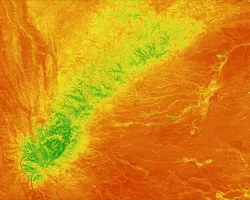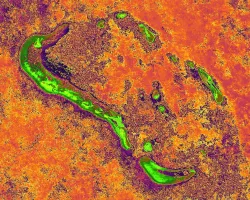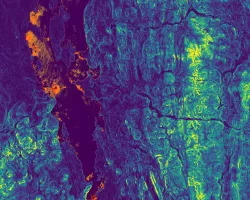Southern California water resources (2024 Spring)
Team: Katya Beener (Project Lead), Gwen Greco, Nelly Perez, Caroline Baumann
Summary: Eelgrass (Zostera marina) is a species of submerged aquatic vegetation found in shallow bays and estuaries with soft seafloors. Eelgrass is recognized for providing ecosystem benefits such as carbon sequestration, sediment stabilization, water clarification, and fish and wildlife habitats. However, eelgrass is impacted by both marine and terrestrial threats associated with climate change. In this project, we worked with the Southern California Coastal Water Research Project, the National Oceanic and Atmospheric Administration’s National Marine Fisheries Service, and the State of California San Diego Regional Water Quality Control Board to investigate water quality parameters (i.e., chlorophyll-a concentration, sea surface temperature, and turbidity) associated with eelgrass in Newport Bay and Mission Bay, California. The team used Landsat 8 Operational Land Imager and Thermal Infrared Sensor, Landsat 9 Operational Land Imager-2 and Thermal Infrared Sensor-2, Sentinel-2 MultiSpectral Instrument, and ECOsystem Spaceborne Thermal Radiometer Experiment on Space Station land surface temperature and cloud mask to create a time series of these water quality parameters from 2019–2023. We found that the parameters followed cyclical, seasonal patterns with turbidity and sea surface temperature peaking in the summer. We did not find that the parameters had changed significantly over longer time periods. These results will be used in a model developed by the Southern California Coastal Water Research Project to assess eelgrass ecosystem health and predict ecosystem occupancy in the future.



